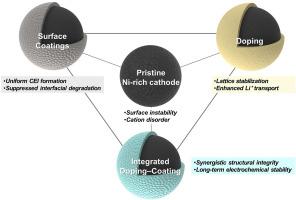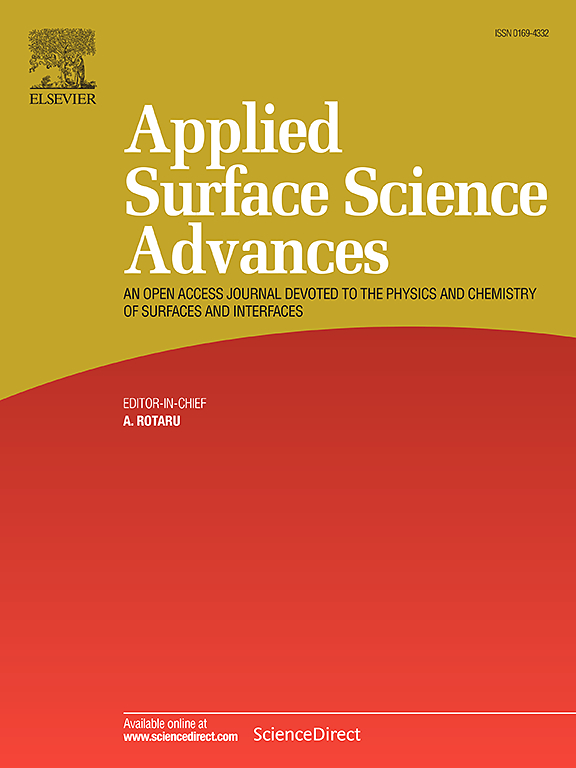Recent progress in tailoring Ni-rich layered oxides via coating and doping strategies for enhanced lithium-ion battery performance
IF 8.7
Q1 CHEMISTRY, PHYSICAL
引用次数: 0
Abstract
Nickel-rich layered oxide cathodes, typified by compositions such as LiNi₁₋ₓ₋ᵧCoₓMnᵧO₂ (NCM) have garnered significant attention as high-energy-density candidates for next-generation lithium-ion batteries. However, their widespread deployment is hindered by a confluence of structural degradation, surface instability, and poor interfacial compatibility under high voltage cycling. To address these multifaceted limitations, this review comprehensively examines recent advances in surface coating and bulk doping strategies, which have emerged as pivotal approaches for enhancing the electrochemical stability and longevity of Ni-rich cathodes. Surface coatings including oxides, phosphates, and fluorides have been shown to effectively mitigate electrolyte-induced parasitic reactions and reinforce cathode–electrolyte interfaces. Simultaneously, elemental doping at transition-metal, lithium, and oxygen sites offer promising pathways to suppress cation disorder, stabilize layered frameworks, and facilitate Li⁺ transport. Emphasis is placed on site-specific doping mechanisms, the role of multi-site (co-)doping, and their synergistic interplay with surface modification layers. By synthesizing recent findings, this review delineates how the judicious integration of coating and doping techniques can enable the rational design of Ni-rich cathodes with enhanced structural integrity, rate capability, and cycle life.

通过涂层和掺杂策略定制富镍层状氧化物以增强锂离子电池性能的最新进展
富含镍的层状氧化物阴极,以LiNi₁ₓᵧCoₓMnᵧO₂(NCM)等成分为代表,作为下一代锂离子电池的高能量密度候选者,已经引起了极大的关注。然而,由于结构退化、表面不稳定和高压循环下界面相容性差,它们的广泛部署受到阻碍。为了解决这些多方面的限制,本文全面研究了表面涂层和大块掺杂策略的最新进展,这些策略已成为提高富镍阴极电化学稳定性和寿命的关键方法。包括氧化物、磷酸盐和氟化物在内的表面涂层已被证明可以有效地减轻电解质诱导的寄生反应,并增强阴极-电解质界面。同时,过渡金属、锂和氧位点的元素掺杂为抑制阳离子无序、稳定层状框架和促进Li⁺的传输提供了有希望的途径。重点放在特定位点掺杂机制,多位点(共)掺杂的作用,以及它们与表面修饰层的协同相互作用。通过综合最近的研究成果,本文概述了涂层和掺杂技术的明智结合如何能够合理设计具有增强结构完整性,速率能力和循环寿命的富镍阴极。
本文章由计算机程序翻译,如有差异,请以英文原文为准。
求助全文
约1分钟内获得全文
求助全文

 求助内容:
求助内容: 应助结果提醒方式:
应助结果提醒方式:


